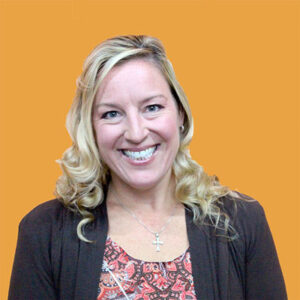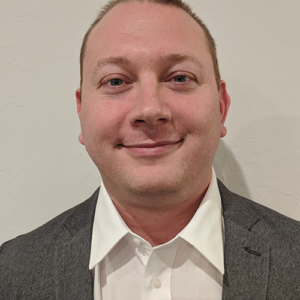“I believe so much in people—and people who can move things,” says Jennifer Erickson, a vocal advocate for ending the organ donation list and a former Assistant Director for Innovation and Growth at the Obama White House.
It’s a powerful statement from a leader who found success not only through her own tenacity but also proudly with the support and wisdom of others. To Jennifer, the best way to find smart solutions is by, in her words, “talking to people who are smarter than me.”
After all, no great leader achieves or maintains success in a vacuum. They work alongside others who strive to change the world in similar ways. And thanks to collaborating with some of the planet’s best thinkers, Jennifer has been able to spearhead a movement that could one day save the lives of millions.
After all, no great leader achieves or maintains success in a vacuum. They work alongside others who strive to change the world in similar ways. And thanks to collaborating with some of the planet’s best thinkers, Jennifer has been able to spearhead a movement that could one day save the lives of millions.
One of her favorite clients was an organization of nuns based in the South Bronx, which at the time was the poorest congressional district in the U.S. “They were running a community development corporation,” Jennifer says. “We were able to show up with $5 million, which greatly increased their budget.”
However, Jennifer’s team wasn’t just there to offer funding. They skillfully guided the nuns in allocating those funds in smarter ways that could best impact their community. “Working alongside such dedicated people was such a gift and a great way to start my career,” she says.”
After her time at Bridgespan, Jennifer held fascinating positions with the newly reopened (after 300 years!) Scottish Parliament as a Special Advisor, a consultant for major organizations including the Bill and Melinda Gates Foundation, and the Director of Competitiveness and Economic Growth at the Center for American Progress.
In 2015, Jennifer landed a coveted position at the Obama White House in the Office of Science and Technology Policy. There, she found more than a passion for ending the organ donation list—Jennifer discovered that the best leaders rely on each other.
Solve The World’s Problems As One
At the White House, Jennifer was surrounded by the world’s greatest minds and leaders. She was equally entranced by the spirit of camaraderie and everyone’s openness to share their expertise. The team believed that sharing knowledge was the key to major initiatives regarding climate change, diversity and equity, scientific innovations, and education.
Though Jennifer had some prescribed duties, half of her job was wide open. She instructed “to go find a problem she could fix” while in her rare position. “You have no budget,” Jennifer’s boss told her. “What you do have is your desk, a phone, and a period of time where people will take your call. You’re here to hustle. You’re here to make something happen for people around the country.”
“It was an amazing, time-limited opportunity to serve and to do so creatively,” Jennifer remembers. “In one sense, I had incredibly limited resources. In another sense, it’s boundless. Where does your imagination end?”
After speaking with experts, Jennifer chose to focus on ending the waitlist for organ transplants. She was drawn in by the enormous problems within the United States’ current organ donation system. The U.S. has the research, resources, and expertise. Yet, “tens of thousands of organs go unrecovered every year!” says Jennifer. “That’s nuts!”
The government also has public support for organ donation programs. “Americans have goodwill towards organ donation,” says Jennifer. “Ninety of Americans support it. That’s phenomenal.”
But, if that’s the case, why are so many viable organs never transplanted while 33 Americans die on the waitlist every day? Clearly, asking for that little donor sticker on a driver’s license wasn’t enough. “The good news,” Jennifers says, “is that it is fixable.
“The research says that if we fix the system, within three years, we won’t need a waiting list for hearts, livers, and lungs,” Jennifer says. “Think about what that could mean for families—for the country.
How to Lead Better Organ Donation Programs
With countless questions, Jennifer connected with experts to better understand the facts and data. Before solving the organ shortage problem for good, she had to pinpoint why so few organs were ultimately transplanted.
Jennifer began collaborating with her fellow White House cohorts, representatives from Health and Human Services, surgeons, patients, and even her former team at Bridgespan. Her pursuit also received commitments with the Department of Defense and private firms in Silicon Valley. “It was an opportunity to bring people in and lift ideas up,” Jennifer said. “It was exciting and a great accelerant of talent and energy.”
Once the research was compiled, Jennifer found startling information. She uncovered “really troubling issues with inequality,” Jennifer says. Too often, low-income citizens and people of color were left out-of-loop both as donors and recipients. “Research shows that Black families are less likely to be approached about organ donation, and talked to less about it when they actually are.”
And although saving lives is always at the forefront of her mind, Jennifer learned how much money the U.S. could save by ending the organ transplant waitlist. “For every patient who gets a kidney transplant,” Jennifer says, “We save a quarter of a million dollars.
“Most people care more about saving lives—but what an opportunity to save tens of billions a year while helping Americans at the same time. It’s huge, exciting, and we have every reason to get it right.”
Jennifer also discovered leadership to be a key contributor to a successful—or a failing—organ donation program. For the most part, many government leaders were unaware of the significant problems and relatively simple solutions. But once educated about the data and disparities, they quickly wanted to make a change.
However, Jennifer also found some leaders and donation programs to be inept or ineffective. In these cases, she stresses the importance of accountability. After all, human lives are on the line. If the results aren’t there, then the current leadership must change.
She points to the success of new leadership in San Francisco, and Dayton, Ohio as proof. In 2019, both cities replaced the leaders of their organ donation and recovery programs. In San Francisco, organ recovery went up by 29% in one year,” Jennifer says. “When Dayton got a new leader, organ recovery—in the midst of a pandemic—increased over 30% in a year!”
These examples alone show that thousands of lives can be saved every year under the right guidance and with the right tools. “I feel a great sense of urgency and excitement about it,” Jennifer says. That’s why she continues to advocate for a world where organ donation waitlists no longer exist.
“Amazing stuff is happening,” she says. “Now, how do we amplify it and accelerate it?”
Go to OrganDonor.gov to be sure you’re correctly registered on your state’s organ donation list.
The conversation with Jennifer Erickson continues on the Leading with Genuine Care podcast. You’ll hear more about Jennifer’s experience in the White House, the data and science behind organ transplants, and so much more! Don’t miss an article or episode of the podcast by signing up for my mailing list. You’ll also get a free guide to my favorite mindful resources. Connect with me on Twitter and LinkedIn and keep up with my company imageOne.
Article Originally posted on Forbes.com




